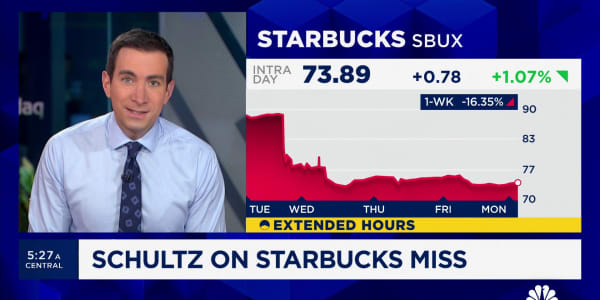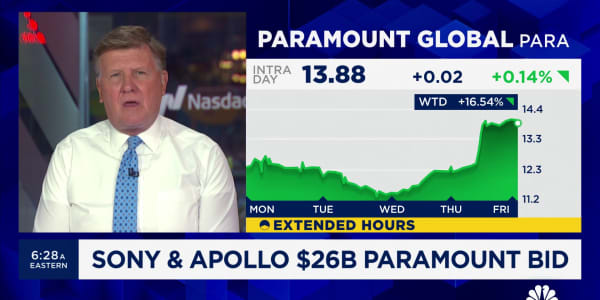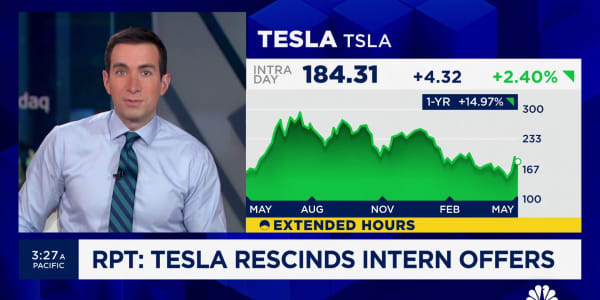Recapping the day's news and newsmakers through the lens of CNBC.
Notes:
Everyone knows the old fable about killing the golden goose. Well, stay tuned: that may be what's happening as the ski industry continually gets more upscale, discouraging people from taking up the sport. With the season just getting underway, skiers who don't shop ahead may be shocked at lift tickets costing more than $100 a day.
Last year, 54 percent of "skier visits"—one skier or snowboarder for one day—were from households earning more than $100,000, up from 48 percent five years ago. And the median age of skiers was 38, up from 34 a decade ago, indicating that new skiers are not being created fast enough to replace old ones. Last year's total skier visits trailed the 10-year average. While lift tickets can be deeply discounted if purchased in advance or as part of travel and lodging packages, all those other costs are rising too, especially as many resort areas add premium-priced restaurants and hotels.
Quotes:
"You have the haves and the have mores."—Douglas Quinby, principal analyst at travel research firm PhoCusWright
"They're chasing existing customers who have the money to spend rather than going after new customers."—Aspen resident Roger Marolt
Wal-Mart's canned response
Notes:
If you sell a product made by someone else, are you at fault if something goes wrong? Wal-Mart has agreed to contribute $25 million to a fund for settling suits by buyers injured by exploding gasoline cans. Plaintiffs say Wal-Mart should have done something. But how could the world's biggest retailer test every product it sells?
It couldn't. But the key to plaintiff's case is their charge that Wal-Mart should have acted once the first lawsuits alerted it to problems with the cans. A Wal-Mart buyer testified that even after being named a defendant in a gas can suit, Wal-Mart did not test the cans or use its power to demand changes.
Quote:
"If you repeatedly are sued in cases and the allegations are people are being severely burned or burning to death, you can't hide your head in the sand. You're making money off of those cans."—plaintiffs' attorney Diane Breneman
Flying cargo class
Notes:
Road warriors take note: if you plan to catch a few Z's on the plane, set an alarm. A Louisiana man woke up after landing in Los Angeles Friday to find everyone else was, well, gone. Trapped in a dark, locked cabin, he could get no one's attention. He tried calling his girlfriend, but when she notified the airline, her tale was dismissed as impossible because crews routinely sweep the cabin before closing shop. The frazzled flyer was released when a maintenance crew showed up, but faced some suspicious questioning for not having a security badge. United offered $250 and a hotel room as the booby prize, and ExpressJet, which operated the flight for United, vowed to get to the bottom of things.
Quote:
"I just don't know how it happened, I really don't. I mean, passengers get off, you'd think somebody would have rubbed me or pushed me and said, 'Hey buddy, we're here.'"—United passenger Tom Wagner
A hidden demographic: The sometimes-rich
Notes:
We've all heard about the one percent and the 99 percent, but what's the 20 percent? Turns out this is an under-scrutinized group of Americans who rank as pretty well-to-do at some point in their lives but nonetheless live with the insecurities common further down the ladder.
It matters because this group of "new rich" can wield great economic and political power and may actually stand as an impediment to reducing income inequality. The group is composed of older professionals, working married couples and well-educated singles. To qualify they must have household incomes of at least $250,000 at some point in their lives, putting them, at that point, in the top two percent of earners. Typically, even when their incomes drop below that threshold, these folks still make more than $100,000, keeping them in the top 20 percent. The existence of this group is behind the surge in "mass luxury" goods and services. Unlike the traditional rich, this group feels a sense of financial insecurity, making it reluctant to support tax-funded programs like food stamps.
Quote:
"For many in this group, the American dream is not dead. They have reached affluence for parts of their lives and see it as very attainable, even if the dream has become more elusive for everyone else."—Mark Rank, a professor at Washington University and author of "Chasing the American Dream"
—By Jeff Brown, Special to CNBC.com




